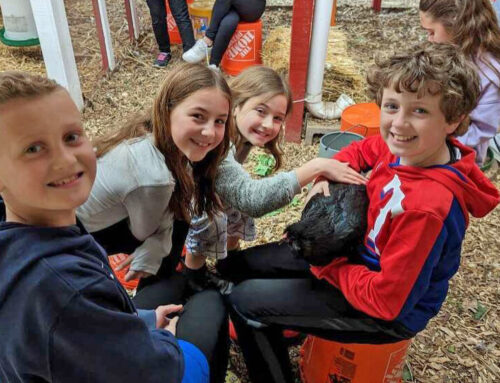Every day, as night draws near, a familiar ritual takes place at
For many, home is a 3/2/2 made of brick. But for countless others, it’s a collection of twigs, a mound of mud or maybe an old hollow log. For while plenty of humans make the lake part of their lives, thousands of other creatures — mammals, birds, fish and amphibians — make their lives part of the lake.
For David Hurt, the presence of all that wildlife is what makes the lake special.
“It reminds me that nature’s trying to live alongside of a thriving human population,” he says. “With just a little bit of opportunity, nature is existing there.”
Hurt, a longtime birdwatcher and amateur botanist, is one of a handful of individuals who work with the
Hurt says the old fish hatchery, on the southwest side of the park behind the dam, is his favorite spot to see birds and other wildlife.
“The fish hatchery is a place that’s close to my heart,” he says. “It’s this little neglected corner of the lake that’s been left to its own devices. There’s really nothing too rare there, but it’s about as good a mix of wildlife as you’d expect to see in north central
“You can see red-shouldered hawks, barred owls, egrets, sandpipers, all sorts of wading birds, congregating there for food. They’re making their living in the heart of the city, just like we are.”
The old fish hatchery isn’t the only place to see birds, of course. Pelicans, some of the most popular birds at the lake, are usually seen on the north and east sides of the park.
“People have kind of fallen in love with the flocks of American pelicans out there,” Hurt says. “They’re so noticeable, these huge white birds out on the lake, and we’re seeing them 12 months of the year now. There are no motor boats and things running through them, so it’s kind of a sedate place for them, too.”
Bluebirds, which are native to the area, have only recently begun to nest at the lake again, and only with the help of Hurt and other local naturalists. Because they nest in open areas rather than trees, bluebirds lost their nesting grounds years ago to development.
They’re back thanks to efforts to return sections of the park to its original state: prairie land.
Master naturalist Becky Rader has been active in restoring prairie areas around the lake.
“Originally, this was all prairie,” she says of the area. “We’ve found letters written in 1840s and ’50s, where people tell relatives of looking east and all they can see is wildflowers. The only trees were along creeks.”
What those people saw was the Blackland Prairie, which once covered 12 million acres in
Rader says it’s crucial to save what’s left.
“My interest is the habitat,” she says. “With the encroachment of development, all the native species are being pushed out: birds, butterflies, animals, fish, everything. They’re at the lake because we’ve taken up the rest of their habitat.”
Most of the park’s prairie remnants are on the lake’s east side, along Flagpole Hill and Norbuck park, at the southwest corner of Buckner and Mockingbird.
Rader has worked with the parks department for the past five years in maintaining those areas as prairie land. It’s a pretty easy job, she says, because it mostly means just leaving it alone.
“For years, it had been maintained not as a prairie but as an area that was mowed constantly,” Rader says. “People weren’t aware of what it was, and would call about weeds, thinking we had to keep it looking clean cut. It’s an education process, just getting across to people that this is what’s always been here.”
Sandra Hicks, a parks department supervisor at the lake since 1986, says people such as Rader have helped the department learn how to better maintain the prairie areas.
“They’re only mowed about once a year now, after grasses and wildflowers have gone to seed,” she says.
Requests to mow the areas, she says, have reduced over the years.
“We used to get more complaints, but as more people become better educated that these are some of the last remnants of the Blackland Prairie, those type of complaints have died down.”
The tall grass of a prairie provides cover for a number of other birds and small mammals, including rabbits, field mice and wood rats. Those animals in turn attract other birds and animals, such as owls, raptors, foxes, coyotes and bobcats, to the park.
“There’s room for more of the smaller animals to live, so we’re seeing an increase in their numbers, and in larger animals, as well,” Rader says. “It’s all part of that beautiful food chain. You change one thing, and it affects the whole system.
“We’ve noticed an increase in the barred and screech owl, along with the American kestrel, a raptor and a beautiful little bird. I watched a pair of them near the Bath House recently, and they’re gorgeous. And though it’s very rare to see them, we have a few coyotes at the lake, and probably a bobcat or two.”
Rader says she has been amazed at how well the prairie areas have recovered after years of being mowed. She says recent counts show about 300 different plants there, up from 192 counted around 15 years ago.
“A pristine prairie has between 300 and 400 species of plants in it. We’re right around that number now, and we haven’t re-seeded anything,” she says. “Some of these seeds have lain dormant in the ground for decades, and yet these plants have survived. It’s really a miracle, and a testament to nature’s resiliency.”
Thanks to that resiliency, Hurt was able to place special nesting boxes for bluebirds among the tall grasses around the lake, and a viable population now lives there. Rader and others also built a bat box to attract bats to the park, and more than just a few: one box can hold a colony of 1,200-1,500 of them.
“We had our first bats in the boxes last year, and we’re hoping they’ll come back as they migrate. We want to attract Mexican free-tail bats, because they’re voracious mosquito eaters.”
Bringing more bats, mice and rats to the lake might not be everyone’s idea of progress. But for Rader and friends, the chance to interact with nature and all its creatures is the best reason to visit the lake.
“The majority of people at the lake now are coming for bicycling, running, that type of thing,” she says. “My goal is to get them to slow down a little bit and see what’s there.”





